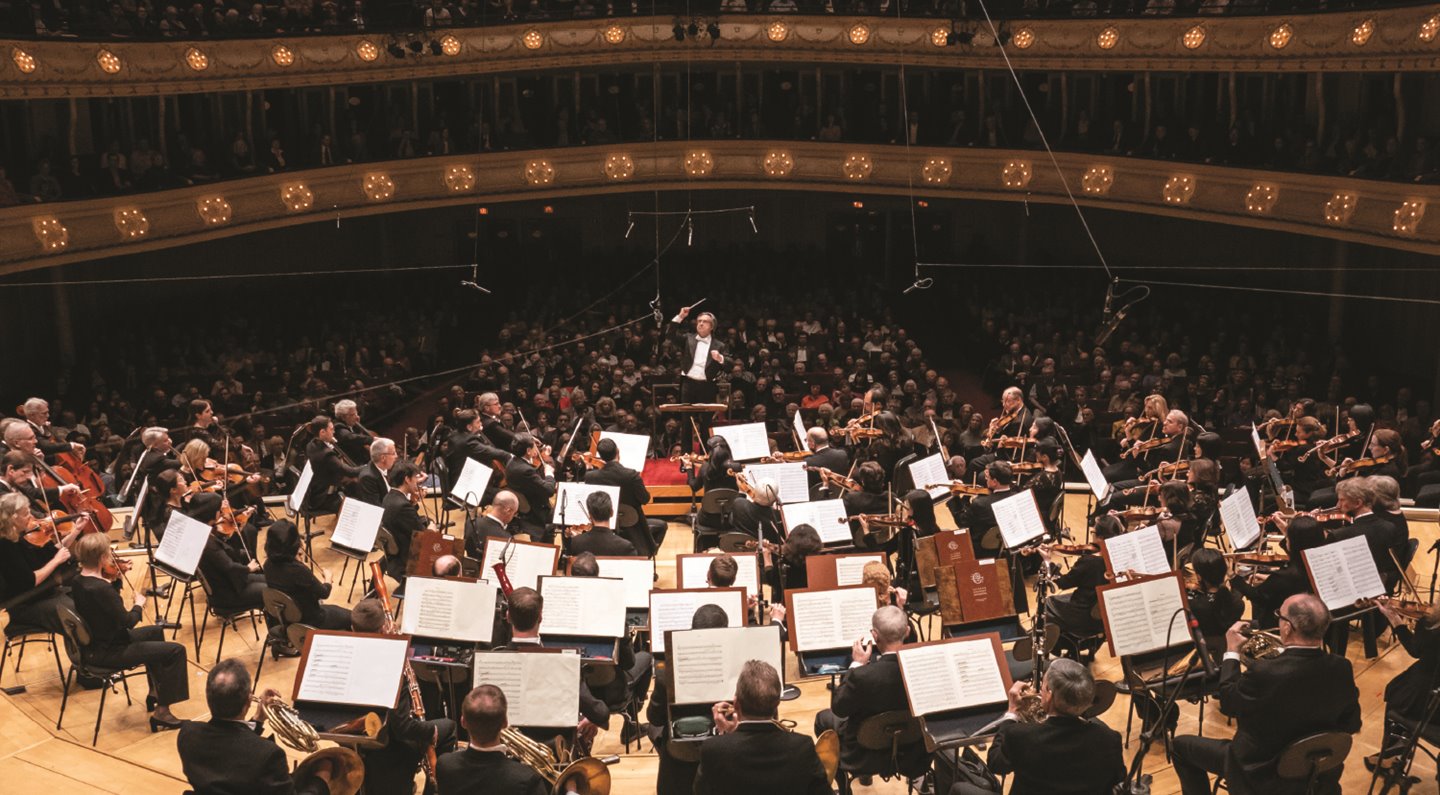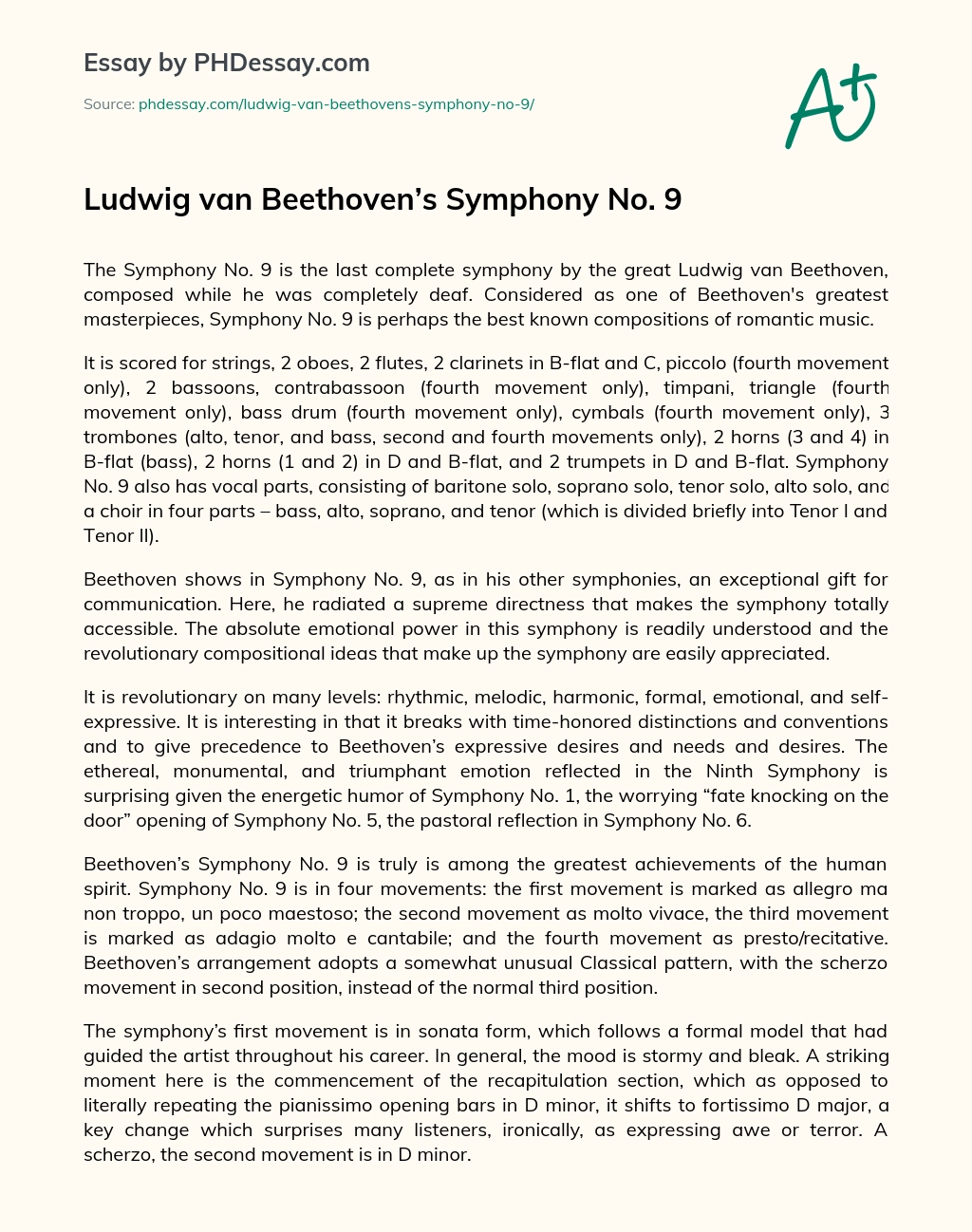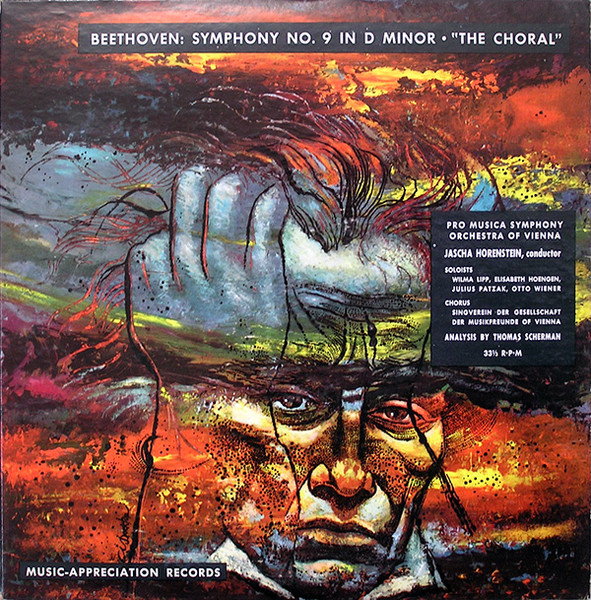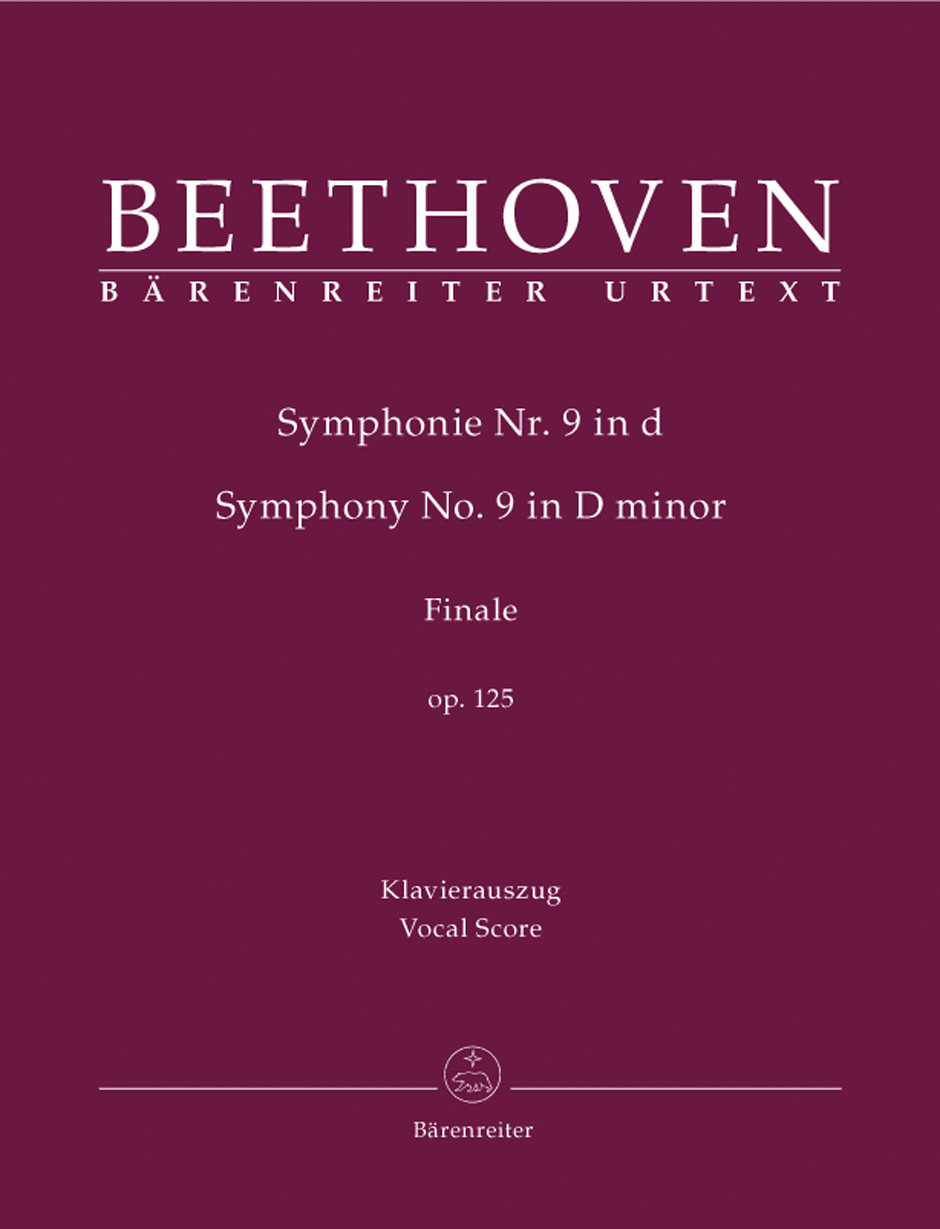Ludwig van Beethoven's Ninth Symphony, also known as the "Choral Symphony," is a masterpiece of classical music that has captured the hearts of listeners for over two centuries. Composed in the early 19th century, the Ninth Symphony is a powerful and emotive work that showcases Beethoven's innovative approach to music composition. In this essay, we will delve into the history and structure of the Ninth Symphony, as well as explore its themes and musical techniques.
The Ninth Symphony is Beethoven's final symphony, and it is perhaps his most famous and well-loved work. It was premiered in Vienna in 1824, and it quickly became a popular and enduring masterpiece of classical music. The symphony is scored for a large orchestra, four soloists, and a choir, and it is approximately one hour in length.
One of the most notable aspects of the Ninth Symphony is its use of vocal soloists and choir. In the final movement of the symphony, Beethoven sets Friedrich Schiller's poem "Ode to Joy" to music, and the choir sings this hymn of universal brotherhood and joy. The use of choir and soloists in a symphony was a departure from the traditional form of the genre, and it added a new level of emotion and expression to the music.
The Ninth Symphony is in four movements, and each movement has its own character and structure. The first movement, marked "Allegro ma non troppo, un poco maestoso," is a grand and dramatic opening that sets the stage for the rest of the symphony. The second movement, "Molto vivace," is a lively and energetic scherzo that serves as a contrast to the first movement. The third movement, "Adagio molto e cantabile," is a slow and lyrical movement that features beautiful melodies and harmonies. The final movement, "Presto - Allegro assai," is a fast and exhilarating finale that combines the themes of the previous movements and culminates in the choir's triumphant singing of "Ode to Joy."
Throughout the Ninth Symphony, Beethoven employs a variety of musical techniques to convey emotion and meaning. One of the most striking examples of this is his use of dissonance, or the use of conflicting or unresolved musical intervals. Beethoven's use of dissonance creates a sense of tension and drama, and it helps to convey the emotional depth of the music. In addition, Beethoven employs a wide range of dynamics, or changes in volume, to add expression and depth to the music.
One of the themes of the Ninth Symphony is the idea of universal brotherhood and joy. This theme is conveyed through the use of the choir and soloists in the final movement, as they sing the "Ode to Joy." The lyrics of the "Ode to Joy" speak of the power of love and unity to overcome divisions and bring people together. This theme is particularly poignant in the context of the early 19th century, when Europe was undergoing political and social upheaval. Beethoven's message of unity and joy is a timeless and universal one that continues to resonate with listeners today.
In conclusion, the Ninth Symphony is a powerful and emotive work that showcases Beethoven's innovative approach to music composition. Its use of vocal soloists and choir, its structure and themes, and its musical techniques all contribute to its enduring appeal and significance. It is a testament to Beethoven's genius and a masterpiece of classical music that will continue to be enjoyed and admired for generations to come.








